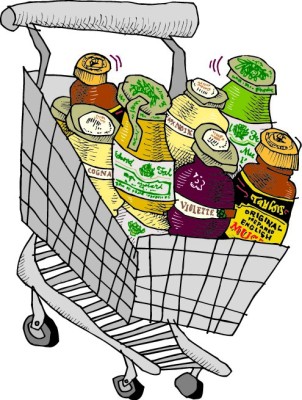
Four questions you’ve always wanted to ask about mustard
So… what’s mustard?
The recipe is pretty simple – you can even make it at home. You grind up mustard seeds, traditionally with a mortar and pestle, but you can use a spice grinder. Once the seeds are ground as fine as you want them, you add liquid. Usually that’s water or vinegar, but you could also use ale or fruit juice. Next add other seasonings. Salt is a good place to start, but you can use anything from herbs to honey. Mix it all together and you’ve got mustard.
What makes some mustards hot?
First, there’s a bit of natural chemistry at work. Mustard comes from the brassica family of plants and, as a defense, these plants developed a compound called sinigrin that turns into mustard oil. It’s that oil that feels like a punch in the nose. Mustard seeds come in white, brown, and black and get hotter as they get darker so black mustard seeds have the most sinigrin.
Second, mustard makers amplify the natural chemistry with recipes that kick up its heat. Warming mustard actually lessens the reaction, so the hottest mustards are made with very cold water. Adding vinegar can halt the reaction and maintain heat so a dash of vinegar is always found in the hottest mustards. Mustards mellow over time so the hottest are usually fresher. Mustards will keep pretty much indefinitely even at room temperature, but they’ll retain more of their pungency when refrigerated.
What’s the deal with Dijon?
Mustard made in the French town of Dijon has a long history of being considered some of the best; it was the mustard of choice for French royalty in the 14th century. There have been laws regulating how it’s made since 1407. These days, the laws stipulate that Dijon mustard must be made with brown or black mustard seed, the darker varieties, making it pungent. There’s a long tradition of using verjuice – the very tart juice of unripe grapes from nearby vineyards – to make Dijon mustard, and the acid helps to balance out the heat. The result is generally a mustard that’s smooth but packs a serious punch.
How did American mustard get so yellow?
A little over a hundred years ago Americans barely used mustard – it was sold mostly as a powder and it was hot. In 1904, Robert French launched a mild “cream salad mustard” that was spreadable and sales took off after it hit a hot dog at the St. Louis’s World Fair. French’s mustard is still a huge seller. Robert colored it yellow with turmeric to set it apart. Competitors copied the look and, ever since, the go-to American mustard has remained bright yellow and fairly bland (thanks to using only mild white mustard seeds). There’s more flavorful yellow mustard to be found out there; Raye’s in Maine makes an exceptional classic yellow mustard that I’ve always got in my fridge.